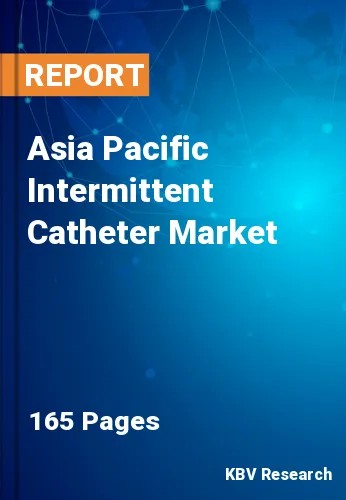The Asia Pacific Intermittent Catheter Market would witness market growth of 5.5% CAGR during the forecast period (2023-2030). In the year 2021, the Asia Pacific market's volume surged to 1,91,482.0 thousand units, showcasing a growth of 5.5% (2019-2022).
Customization contributes to improved comfort for patients undergoing intermittent catheterization. Patients can now choose catheters that align with their preferences, considering material, size, and ease of use. This personalized approach fosters a sense of agency and control, positively influencing patient compliance with prescribed catheterization regimens. Certain medical conditions may necessitate specific features in a catheter. For example, patients with neurogenic bladder dysfunction may require catheters with specific flexibility or lubrication properties. Customization allows healthcare providers to match the catheter features with the unique requirements of various medical conditions, optimizing therapeutic outcomes.
Moreover, innovation in intermittent catheters goes beyond material advancements to include integrating smart technologies. Electronic monitoring devices embedded within catheters provide real-time data on usage patterns, facilitating personalized care plans and timely interventions. This trend enhances the efficiency of catheter management and contributes to the overall digital transformation within healthcare. Electronic monitoring devices embedded within smart catheters enable the collection and analysis of usage patterns and trends. Healthcare providers can access valuable insights into patients' catheterization routines, identifying any irregularities or deviations from the prescribed plan. This data-driven approach enhances the precision of care management.
Half of the world’s population, or more than 4.5 billion people, lived in Asia as of 2020 (including China and India, all of which have populations of over 1 billion). The region has approximately 414 million Asians aged 65 and over. It is expected by 2060, there will be over 1.2 billion Asians who are 65 years of age or older. Thus, with the growing number of prostate cancer cases and the aging population in Asia Pacific, there will be increased demand for intermittent catheters in the region.
The China market dominated the Asia Pacific Intermittent Catheter Market by Country in 2022, and would continue to be a dominant market till 2030; thereby, achieving a market value of $227.6 million by 2030. The Japan market is registering a CAGR of 4.8% during (2023 - 2030). Additionally, The India market would showcase a CAGR of 6.1% during (2023 - 2030).
Free Valuable Insights: The Global Intermittent Catheter Market is Predict to reach $ 3.1 Billion by 2030, at a CAGR of 4.7%
Based on Product, the market is segmented into Uncoated, and Coated. Based on Coated Type, the market is segmented into Hydrophilic, Antimicrobial, and Others. Based on Indication, the market is segmented into Urinary Incontinence, Spinal Cord Injuries, General Surgery, and Others. Based on End User, the market is segmented into Hospitals, Ambulatory Surgical Centers, and Medical Research Centers. Based on Category, the market is segmented into Female Length Catheter, Male Length Catheter, and Kid Length Catheter. Based on countries, the market is segmented into China, Japan, India, South Korea, Singapore, Malaysia, and Rest of Asia Pacific.
By Product (Volume, Thousand Units, USD Billion, 2019-2030)
By Indication (Volume, Thousand Units, USD Billion, 2019-2030)
By End User (Volume, Thousand Units, USD Billion, 2019-2030)
By Category (Volume, Thousand Units, USD Billion, 2019-2030)
By Country (Volume, Thousand Units, USD Billion, 2019-2030)
Our team of dedicated experts can provide you with attractive expansion opportunities for your business.

